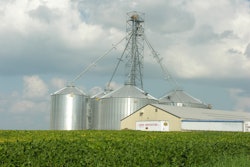It’s the beginning of a new decade, and everyone — in every industry — is wondering what lies ahead. After facing the unique challenges posed by 2009’s later-than-usual, wetter-than-average — and overall record — harvest, elevator operators and feed manufacturers have been forced to take a critical look at their operations.
Given their insider perspective on the needs of the industry, FEED & GRAIN spoke with leaders in the millwright community to gain insight into the issues critical to its continued success and growth. Participating in this discussion: Glenn Andler, general manager with Vita Builders, Fall River, WI; Rod Blackford, president of Iowa Elevator Systems, Carlisle, IA; Walter Paxson, vice president of Elevator Services & Storage, Inc., Beaverdam, OH; Gary Sondgeroth, president of PMI, LLC, Ames, IA; and Dick Thompson, president of Agri-Equipment Services, Allegan, MI.
The state of the industry
As yields continue to improve and customers expect faster turnaround times, elevators will need to be able to handle loads quickly and efficiently to stay competitive.
“It’s a fact, come harvest, you need to be ready to handle product for the producer or they will take their business elsewhere,” Paxson says.
Blackford表示赞同:“农民知道设施can receive in a day. They are trying to get faster throughput so they split their load in more than one location so they don’t bottle all their grain up in one elevator. They want to keep their trucks moving. The fall is the best opportunity you have to get a customer and grain in the bin.”
In order to keep up with these demands, most elevators are looking for “bigger and faster” equipment to increase processing capacity; however, as elevators look to upgrade, a number of factors must be taken into consideration.
More often than not, millwrights are commissioned to take on older terminals and country elevators built at a time when grain did not come in as rapidly as it does today. Consequently, these facilities are not built to accommodate the industry’s powerful new handling equipment.
“If you increase the bushel power intake of your equipment, realize this addition will ripple through the entire facility,” Andler says. “If they can receive 100,000 bushels/day — but can only dry 100 bushels/hour and they’re full in five hours — they’re not going to be able to get it through the system. It isn’t any good for them unless it all works together.”
According to Paxson, with more grain to handle in a shorter time period and with the expectation to achieve better throughput, elevator operators should approach upgrades as part of a long-term plan and focus on putting themselves in a better position in the marketplace.
“You need to approach renovations and new additions with the future in mind,” Paxson says. “Ask yourself where you want to be today — and where you might be 20 years from now. If you plan for it, what you put in today isn’t going to bottleneck 10 years down the road.”
Using technology to reduce labor costs
Many grain elevators are looking toward capital improvements and new technology to improve efficiency and add to their bottom line.
“People are a huge expense so if they can put in equipment that will eliminate a position, they’ll do it,” Paxson says. He points to an increased interest in controls, safeties and other things that “eliminate a person from running a broom all day and having to pay him and his benefits.”
Paxson also suggests operators look at the big picture before hiring a new employee to see if adding new technology would be more efficient.
Belt alignment, bearing monitoring, motion sensing — the addition of these safeties allow the modern grain elevator to be operated with fewer people.
Thompson cited one example where storage upgrades saved a company labor costs: “We put in 800 tons of overhead storage at one facility. Originally, it had a warehouse on the floor, conveyed with a pneumatic system or brought over from the dry storage to the mill, receiving hopper, and then went into the leg and into the bins. Before the project, it was a lot more labor intensive, with hauling stuff with a front end-loader or feeding a pneumatic system with a front end-loader. Now it’s all overhead, or all gravity into the machines, through crank conveyors. The new system conveys grain into the mill with a direct conveyor; or goes into a distributor and into their bins; or it can be loaded out of the facility and into semi-trucks for the farmers that buy in bulk.”
In a move to create a streamlined workflow and limit labor costs, Sondgeroth has observed more companies leaning toward enclosed storage, and away from covered piles.
“I think we’ve reached a saturation point, and there are people looking for more permanent storage where they can better control the quality of the grain better,” Sondgeroth says. “The added benefit is that it’s less labor intensive to reclaim grain since the outside pile requires an end-loader application.”
According to Blackford, drying and receiving capacity is directly related to the amount of labor required, noting that such upgrades add to the bottom line in other ways.
“很多客户跑烘干机在收获客24/7ep up — and this may last 30 to 45 days,” Blackford says. “If you do the same amount in less time, the equipment will pay out over time.”
Sondgeroth agrees: “New tower dryers are just that much more efficient. When we compare the costs associated with the old drier — gas costs, electric costs, and throughput per bushel, what it costs to dry it down — versus a new one, it’s easy to show a client how much they’ll save per year.”
Strategies to limit downtime
Prior to and during business season, when equipment runs from mid-October nonstop until the middle of November, it is wise to have methodology — or a preventative maintenance program — in place to ensure your equipment will be up and running through peak time.
Andler suggests elevators keep records on replaced and repaired equipment and parts to possibly identify a pattern.
“By doing these periodic checks, breakdowns are prevented and minimized,” Andler says. “This will save you money in the long run. Breakdowns happen at inconvenient times — it’s not going to breakdown if you’re not using it so they usually happen when you’re busy and trying to run facilities.”
Andler contacts his clients immediately after the harvest to do an inventory of wear and tear. “If we don’t ask early, they’ll forget about it and by the time the next harvest comes, they try to start up the equipment and remember, ‘Oh, that’s right, I forgot to fix that.’ In August we contact our customers to ask what needs to be checked.”
Safety considerations
Understandably, engulfment prevention remains a high priority. OSHA compliance and internal risk management teams have driven grain elevators to explore zero-entry systems.
“I think one of the biggest scares that has affected every major co-op in our trade area is some type of near miss or incident of engulfment — and that’s what really has driven the zero-entry situation,” Sondgeroth says. “There does seem to be more safety focus with large diameter bins and zero-entry sweep systems.”
Vita Builders takes a unique approach in stressing the importance of safety. The company regularly sponsors an education seminar about engulfment for its customers.
“The more you keep people aware of the safety policies, the more it becomes a habit,” Andler explains. “That’s what you’re trying to do. You don’t just have one safety meeting, and say, ‘Guess we’re done for another 10 years’… We do this on a regular basis and bring safety to the forefront to make people understand and keep it top of mind. It has to become the norm.”
The millwrights also noted the increased interest in interlocking safety switches on equipment.
Rail fall safety systems — with additions like custom harnesses — have come a long way, but fall protection remains a major consideration in renovations beyond rail applications.
“Maybe in the past if there wasn’t access to a bearing or a drive that was 10 feet off the ground, the attitude was ‘They can get that with a ladder,’ but now I think the attitude has really shifted to, ‘If we need a ladder for it, we really require a platform’,” Sondgeroth notes.
Working with a millwright
Gone are the days when the guy in the pickup truck could bounce from elevator to elevator doing repair work, toting a few tools, a torch and a welder, and calling himself a millwright.
“I would recommend a grain elevator deal with millwrights who have been in the industry for awhile and have the proper training with things like working in confined spaces, CPR and forklift operating,” Paxson suggests.
Thompson says elevators should inquire about a millwright’s track record and ask for references before doing business with them.
如果经验是国王,那么reputability智慧h a certificate of insurance. Should you choose to work with a firm that is not insured, you’re taking a gamble with more than the quality of the work.
“If something does happen, you need to know you can survive if something happens,” Paxson says. “If the millwright isn’t insured, you could be out of business for a period of time — and that’s very critical in the grain industry. If you have someone working for you, you want them to do a good job and work safe and be insured and have the equipment to get the job done.”
“Adequate insurance is a must for any construction company,” Blackford says. “Our industry is different from others because we work at elevated heights in all kinds of weather and with flammable and explosive materials. An experienced work force is needed and training for new hires is important. We work continually with our insurance company in loss prevention and employee training.”
Engulfment and dust explosion prevention is always a concern, but accidents do happen, and if the millwright is at fault, a well-insured firm will save the grain elevator from financial liability. Prior to working with a millwright, request an insurance certificate.
“Rarely is poor construction at fault for these accidents, as much as negligence on the jobsite in an existing facility,” Paxson says. “If an incident occurs, you want to make sure liability insurance is covering those things.”
Most importantly, millwrights offer solutions, and operators should use them as a resource, a third party to evaluate what needs to be improved.
“We’re all in this together,” Andler says. “If the elevator and feed plant isn’t profitable, it isn’t going to do me any good. Everybody has limitations. Sometimes you put in the best equipment in the world, but if you don’t have good people working for you, none of that will matter.” ¦





















